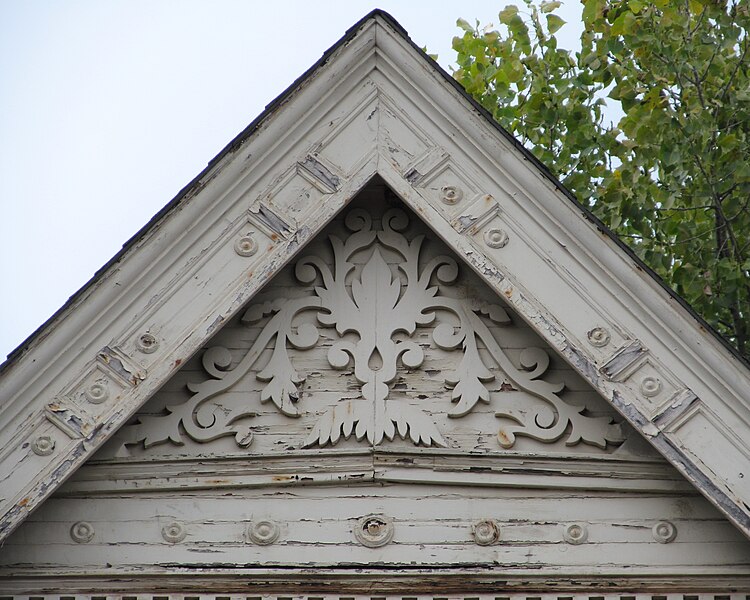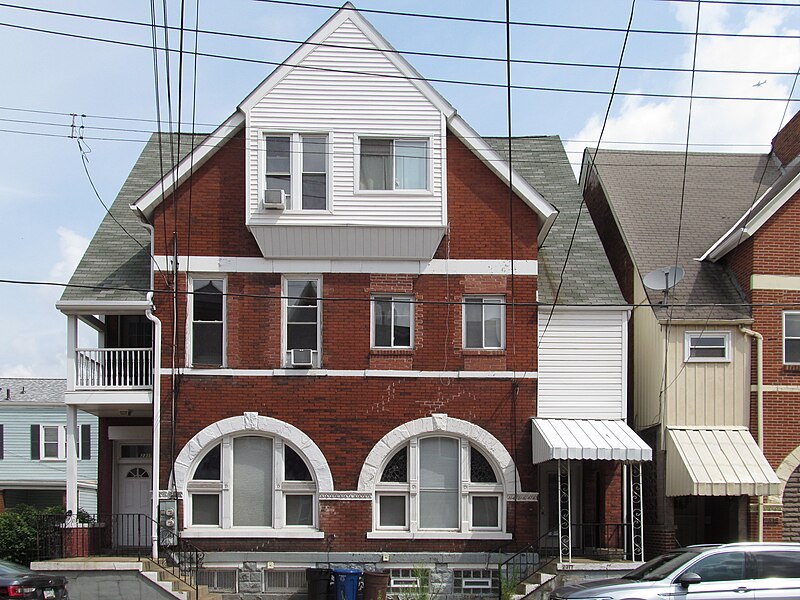
Three quite different interpretations of the Queen Anne turret on Shadyside houses. Above, a pair of faceted turrets on a double house.

An unusual rectangular turret preserves its original farmhouse-Gothic window and woodwork. The turret itself is set at a 45° angle to the rest of the house.


Finally, an octagonal domed turret on a house whose well-preserved details are worth pausing to admire. We note in passing that even the paint is, if not original, at least the dark green color typical of Pittsburgh houses of the turn of the twentieth century: you can scratch the trim of many a Pittsburgh house and find this color at the lowest level.

An appropriate arrangement of birds on those cables could make a short musical composition.

A shingly front porch that survived the epidemic of porch amputations in the 1960s and 1970s.

The parlor window has some good stained glass under the arch and, in the arch itself, a sunflower ornament for a keystone.





































